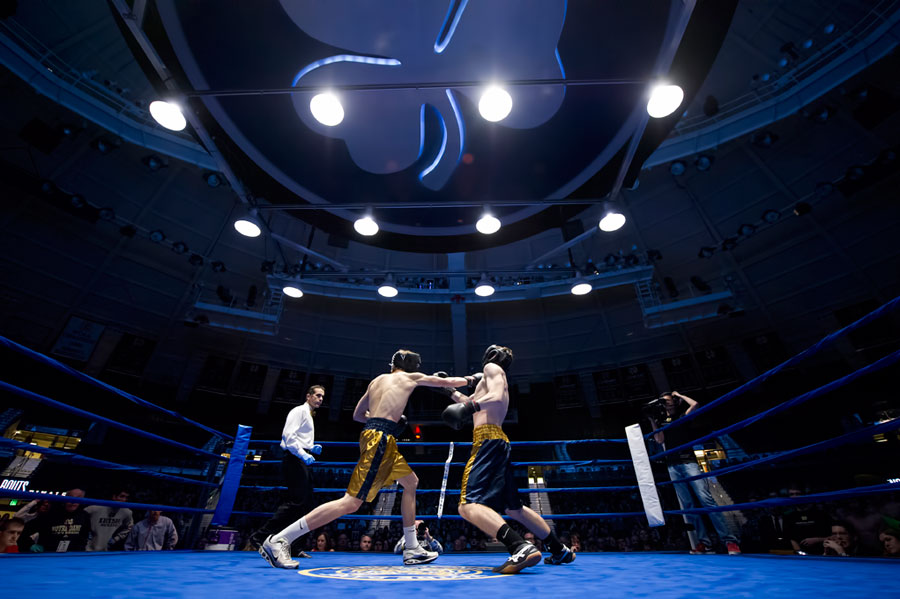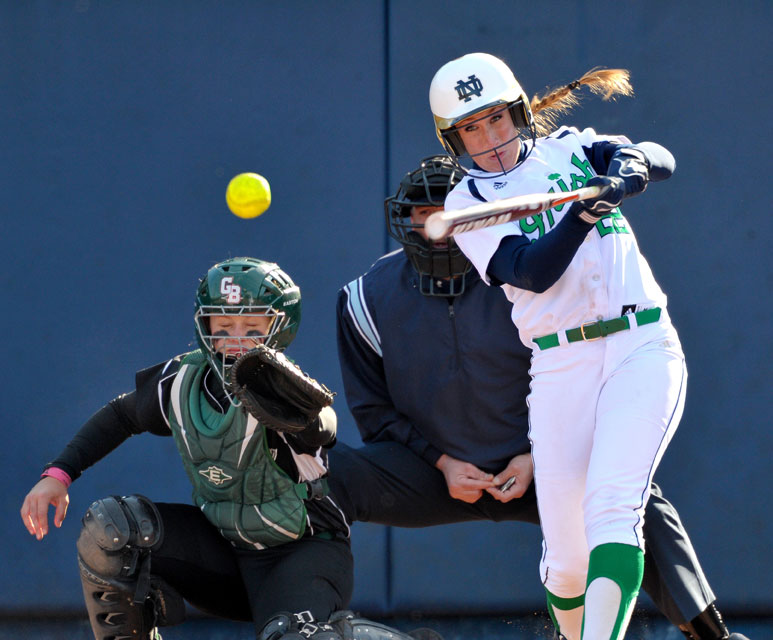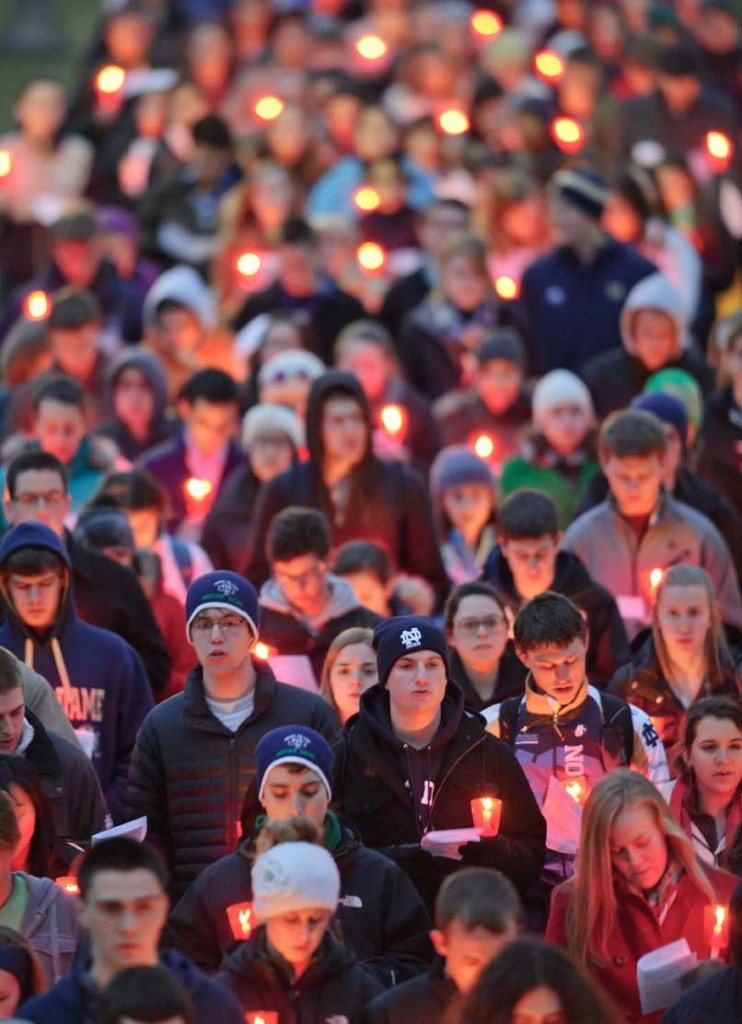This week’s blog post begins with a little story:
In 1991-92 I was a sophomore living in Alumni Hall, where then ND running back and future NFL pro-bowler Jerome Bettis also lived. My roommate had a particularly tricked-out video game system (for the era) so it wasn’t uncommon to find Jerome Bettis on our couch playing video games. Now, in those days, sports photography was much more of a technical challenge than it is these days. (We also walked uphill to school both ways through snow 6-feet deep, but that’s a different story.) We shot on film with fully manual cameras–manual exposure, manual focus. It was quite the challenge simply to make an in-focus, well-exposed photo of sports action. I’d made a photo of Jerome Bettis in action for Notre Dame of which I was especially proud. Jerome was carrying the ball, running toward me, and it was tack sharp. Wow! A triumph! I was so excited to show it to Jerome and have him “oooh” and “aaahh” over my photographic skill. I handed him a print, he took half a glance at it, said “What’s so special about that?” tossed it aside and went back to his video game.
The point of this story is not to say ‘Jerome Bettis was a big meanie’ but to highlight the difference between a photo as the photographer sees it and as the viewing public sees it. I knew what a challenge it was to have a sharp sports-action photo, but Jerome didn’t know or care. He’d been photographed by the best sports photographers in the country, as far as he knew ALL sports photos were tack-sharp. All I’d done was shown him the bazillionth photo he’d seen of himself carrying a ball. Not scoring a touchdown, not breaking a tackle, not leaping over a defender…just carrying the ball. Jerome was honest, and 100% correct: The photo wasn’t anything special.
So at last I come to the point of this blog post: When we photographers make an image we remember everything that surrounded that moment, the technical or logistic challenges, or the emotion of those we are photographing. You hope the image tells a story but sometimes that story stays with us. Those who look at our photos may or may not know what went into making them. That’s where a good photo editor can add value to the visual mix. An informed pair of eyes, free of any influence of having experienced the moment, can cut through the emotion attached to a photo and judge the image on its merits alone. As photographers that helps keep us sharp and challenges us to think harder when we’re making the photos. That’s why Barbara and I came up with this monthly top ten exercise. Each month we pick ten of our own favorite photos from the previous month, then we each edit the other person’s ten images down to five, so that together we end up with 10 images that are–hopefully–both special to us and to the viewer.
So here is the Top Ten for March 2013. In future months, I’ll talk less and let the pictures speak for themselves.
Matt Cashore
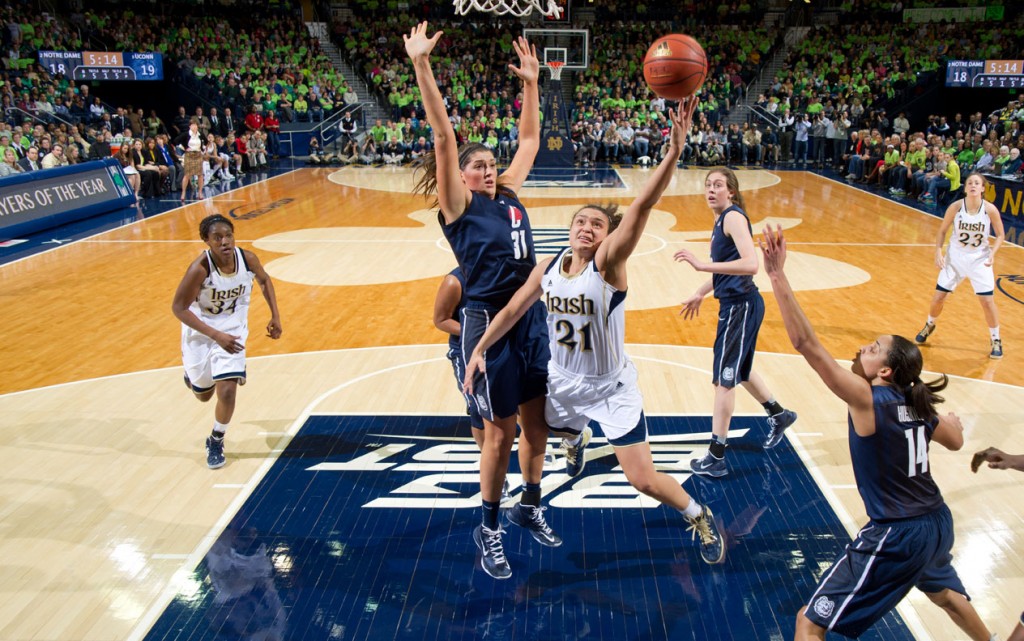
Mar 4, 2013; Kayla McBride (21) goes up for a shot in the first half against UConn. Notre Dame won 96-87 in triple overtime. ..Photo by Matt Cashore/University of Notre Dame
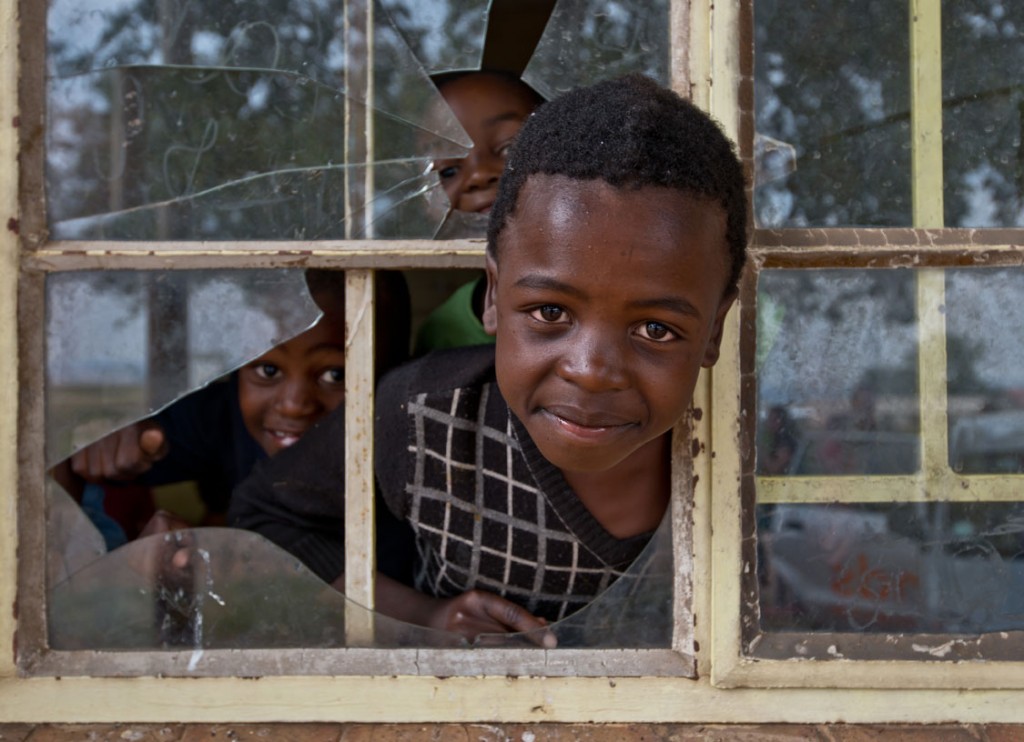
Mar. 12, 2013; A boy looks out a window at a child care center in the Dube Hostel in Johannesburg, South Africa…Photo by Matt Cashore/University of Notre Dame

Mar 3, 2013; 2013; Singer songwriter/producer, Lawrence Santiago (left) and rapper/songwriter, Jeffery Stephens – Santiago x The Natural in Chicago. Photo by Barbara Johnston/University of Notre Dame
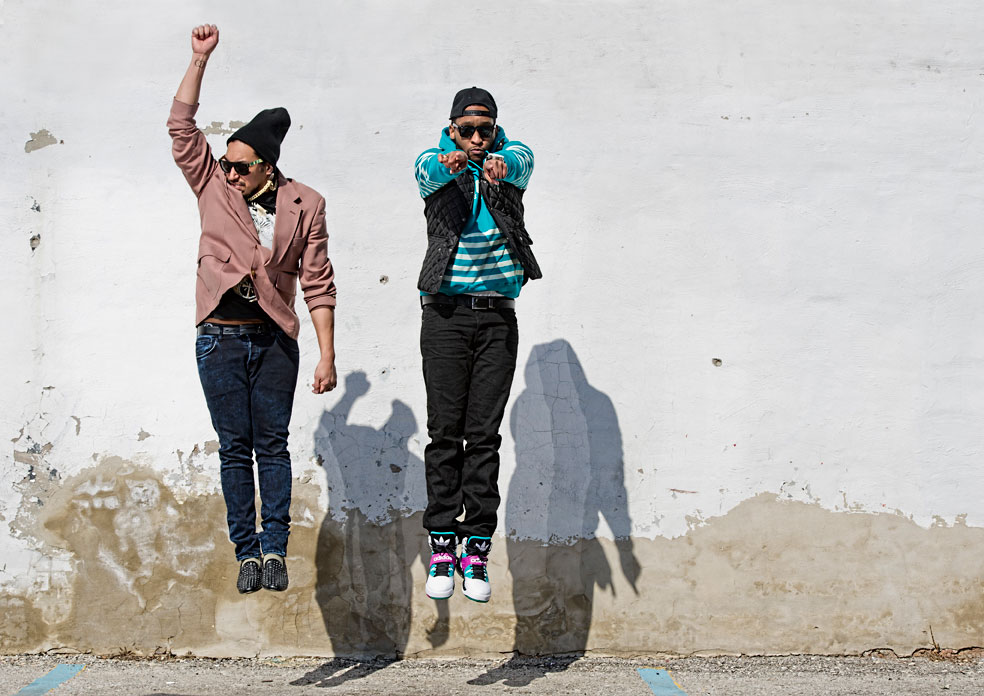
Mar 3, 2013; 2013; Singer songwriter/producer, Lawrence Santiago (left) and rapper/songwriter, Jeffery Stephens – Santiago x The Natural in Chicago. Photo by Barbara Johnston/University of Notre Dame

Mar 30, 2013; RCIA Easter Vigil in the Basilica of the Sacred Heart. Photo by Barbara Johnston/ University of Notre Dame

Mar. 20, 2013; Prof. Joe Fernando for ND Magazine. Photo by Barbara Johnston/University of Notre Dame

